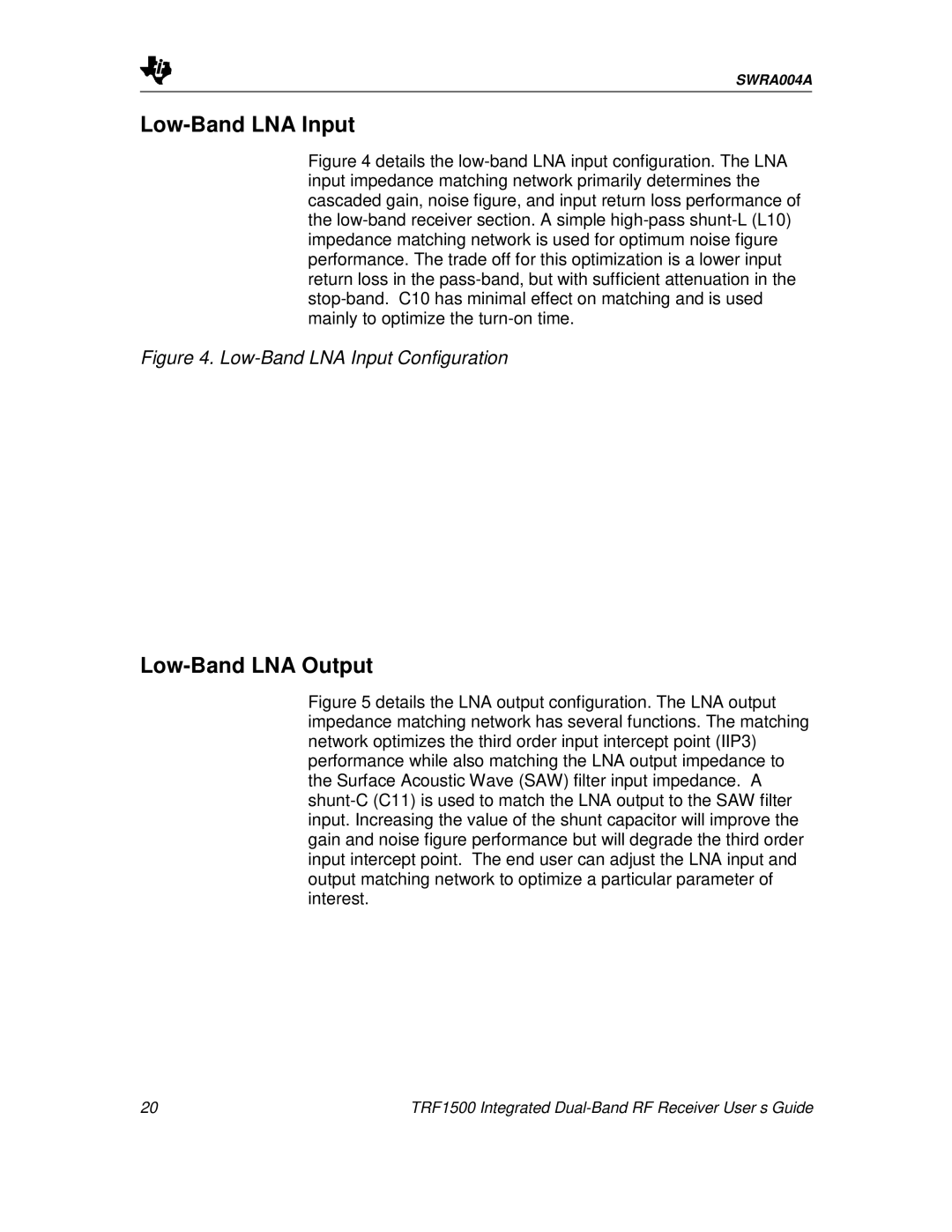
SWRA004A
Low-Band LNA Input
Figure 4 details the low-band LNA input configuration. The LNA input impedance matching network primarily determines the cascaded gain, noise figure, and input return loss performance of the low-band receiver section. A simple high-pass shunt-L (L10) impedance matching network is used for optimum noise figure performance. The trade off for this optimization is a lower input return loss in the pass-band, but with sufficient attenuation in the stop-band. C10 has minimal effect on matching and is used mainly to optimize the turn-on time.
Figure 4. Low-Band LNA Input Configuration
Low-Band LNA Output
Figure 5 details the LNA output configuration. The LNA output impedance matching network has several functions. The matching network optimizes the third order input intercept point (IIP3) performance while also matching the LNA output impedance to the Surface Acoustic Wave (SAW) filter input impedance. A shunt-C (C11) is used to match the LNA output to the SAW filter input. Increasing the value of the shunt capacitor will improve the gain and noise figure performance but will degrade the third order input intercept point. The end user can adjust the LNA input and output matching network to optimize a particular parameter of interest.
20 | TRF1500 Integrated |
